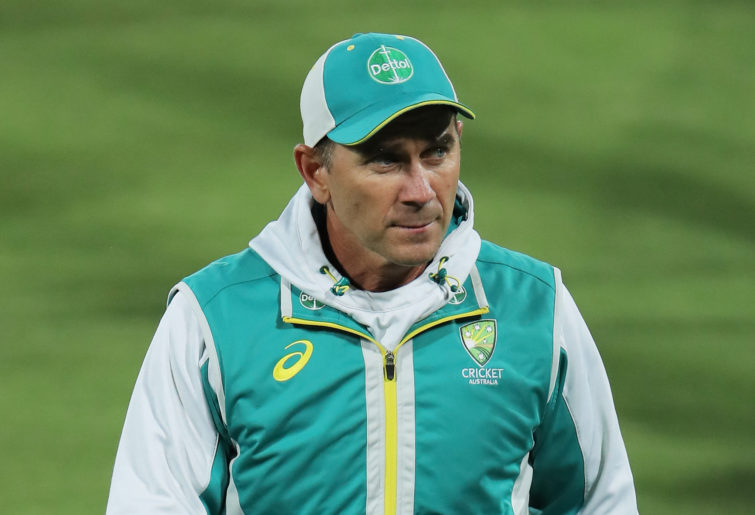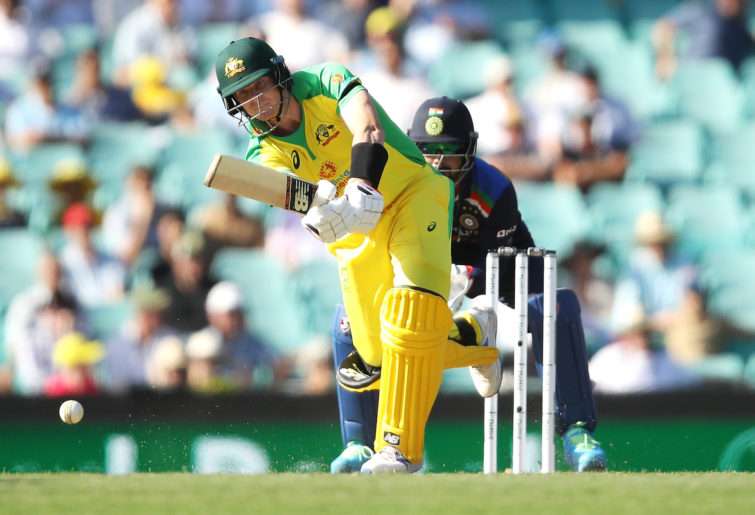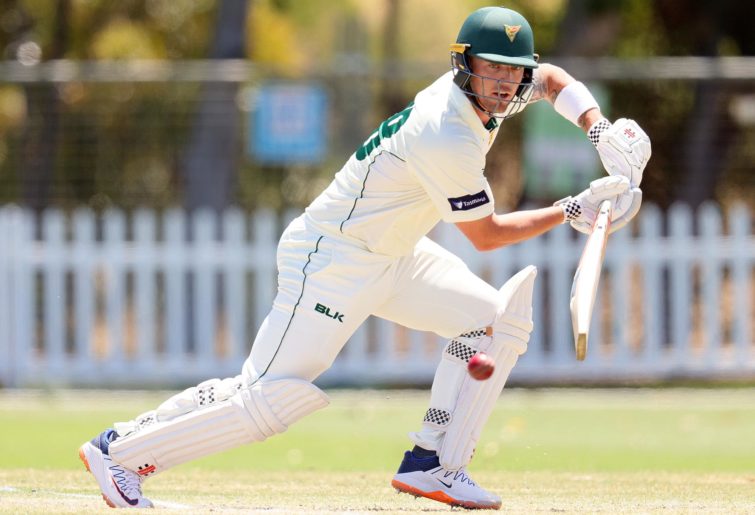Stoinis clubs stunning IPL ton, makes tough chase look a cinch with clutch final-over barrage
Marcus Stoinis produced his first IPL century and it was a beauty. He went 6, 4, 4, 4 to finish off the Lucknow Super…
Opinion
Rare concurrent fixturing has given Australia the best possible opportunity to fast-track its squad development in a time where it is desperately needed.
After an unsuccessful summer, the Australian cricket team has found itself in a strange position with a handful of the world’s best players surrounded by a mix of future stars and, at least form-wise, passengers.
The five-match T20 series in New Zealand had been set in advance, scheduled to commence February 22, and was seen as a potential bounce-back opportunity to get the taste of success back into the national setup.
Now that a Test series has been announced to take place in South Africa commencing in late February – one, by the way, that is still up in the air, although Cricket South Africa chairperson Zak Yacoob confirmed the tour is scheduled to take place – Australian cricket has a unique opportunity to get out of its short-term funk with an almost immediate resolution.
Despite improvements in squad selection overall, with players rewarded for state form, the Australian selectors remain guilty in blurring the lines between formats, as well as identifying clearly defined roles for its players.
Should these two tours go ahead as expected, Australia will be forced to think smarter with its approach to player development, and which players they deem to have strong international futures.
Part of the developmental issue we see is created from a lack of stability within the setup.
Too often, players can receive opportunities akin to mirages – what is seen as a good pick for the future may well be a temporary assignment that doesn’t have job security attached to it (for example, Kurtis Patterson).
A player such as Marcus Harris worked so hard for a recall, only to inevitably be a fill-in who isn’t treated as a true Test opening batsman.

Marcus Harris of Australia (AAP Image/Richard Wainwright)
Of course, it’s impossible to fit 15 good players into one team of 11, however, a supportive and confident environment can be created to give players more hope.
That’s why the upcoming split squads will be so important for Australia.
The selectors and the coaching staff have an opportunity to draw the line and make strong decisions on the future of Australian cricket.
The ability to open up squad spots to give the right players an opportunity to play international-level cricket against strong opposition seldom arises in the manner it currently has.
Picking players in formats they should be selected in sounds simple enough, particularly for the future, but it doesn’t happen often enough at the international level.
Cameron Green will play limited-overs cricket for Australia in the future, but his selection two months ago had no reasonable explanation.
Pedestrian numbers and fringe status for Western Australia and the Perth Scorchers in the formats historically indicated that this was a reach.
Splitting squads allows this scenario to be avoided, while replenishing the depth Australia has sorely missed and speeding up the process of quality international backups, as opposed to a host of players that will be overawed in the future.
A perhaps overlooked benefit of the scenario too will be how it impacts on the communication between management and players.
Even in 2021, we hear about players left unaware about whether they are being picked in a particular squad, or even if a tour is going ahead.
Australian management will be forced to reach out to over 30 players over the next couple of weeks, as well as a host of coaches in order to ensure the upcoming tours are run smoothly.
Should it be done properly, doors that have previously been locked shut, will be forced open and players will be able to have greater accessibility to the right people.
Effective dissemination of information again, seems simple enough, but appears to be lacking in a professional sport that is as much mental as it is physical.
Handle the next two months of cricket properly and we may be ushering in a new era of Australian cricket, one that is more transparent and has a proper end goal.
Because ultimately, Australia wants to be the best team in the world in all three formats.

Justin Langer (Photo by Matt King – CA/Cricket Australia via Getty Images)
World Cup wins are a good measure, of which Australia will be looking to rate highly in the next two years, as are series wins, none more so than the Ashes.
If the South African tour goes ahead, we should get to see the right players picked in the right squads for the benefit of Australian cricket’s future.
And with 30 players on international duty, the flow on to the rest of the Sheffield Shield season will only serve to improve the quality of the competition in the next two or three years.
Talented club cricketers will get opportunities only handed out sporadically, historically, and get the chance to establish themselves within the state setup – players such as James Seymour from Victoria are fully deserving.
Ensuring the right players travel to South Africa and New Zealand will be important in giving players an understanding of their futures.
The crossover between those that represent Australia in Tests and T20s will ultimately allow the selectors to take a couple more risks with the short-form squad, in a bid to give players such as Josh Phillipe and Tanveer Sangha key experience early in their careers while they develop their longer-form games.
Against New Zealand, individual performances rather than a winning series will be the best measure of success for Australia, particularly given the World Cups approaching in the T20 format – the likes of David Warner and Steve Smith are assumed to be locks, however, form cannot be denied.

Steve Smith (Photo by Mark Kolbe/Getty Images)
So, how do we split the squad and who goes where?
Australia must simply select players that are most likely to represent the nation in Test Cricket, or in any limited-overs cricket on an ongoing basis into the future.
A player such as Sangha is the number one spin prospect in any form of the game, however selecting him for the New Zealand tour with his current white-ball output will be vital in his initial international development, allowing him to ease into Shield cricket in the future.
Players like Sean Abbott and Moises Henriques are examples of the good work selectors have done in assessing state-level performances, which has seen both in all Australian squads.
However, given the split-squad, decisions must be made.
Despite his stellar red-ball form, Abbott should head to New Zealand for the T20s and put his best foot forward for both T20 and ODI cricket.
The depth in pace bowling at Test level would have Abbott in a relatively deep line, whereas the likelihood of rotation in limited-overs cricket is far more realistic.
Giving Abbott five matches in New Zealand allows him the opportunity to put together numbers that can be used when it’s time to pick between the likes of himself, Jhye Richardson and Kane Richardson, to partner Pat Cummins and Mitchell Starc.
With Henriques, it appears as though he has settled into a spot in the ODI squad, and his value in fighting for a middle-order spot in the Test squad will be seen as important.
The veteran is perfectly capable of playing a role in any format, however, the murky waters Australia is facing with the number five position means an opportunity could pop up.
Henriques should also be in the Test squad as the backup all-rounder, should anything happen to Cameron Green.
Similarly, decisions will need to be made about Ben McDermott and Jhye Richardson, two of the BBL’s best performers this season.
I previously wrote an article regarding McDermott, and now appears to be the best time to include him in a travelling squad for red-ball cricket, while Jhye Richardson is a player for all three formats and could justifiably play in the first Test, batting at eight for Australia.

Ben McDermott (Photo by Daniel Kalisz/Getty Images)
Alex Carey is the most interesting candidate as the clear next best option for the Test team as a wicketkeeper, but also as one of the most in-form T20 players.
For the purposes of the split squads, it may be time to take Carey to South Africa and allow him to work with all the bowlers in the nets, honing his craft and placing more pressure on Tim Paine.
While he wasn’t the number one pick with the gloves in the T20s played against India, Carey is an established member of the setup and as such, giving an opportunity to younger players against New Zealand will only serve to improve the wicketkeeping stocks in Australia, which is desperately needed.
The final big question will be regarding Matthew Wade, and how the selectors travel down that path.
The decision should be quite simple.
Wade has done an excellent job as a team player in the longest format, but he should quite clearly travel to New Zealand.
In his last two T20Is, Wade scored 58 and 80, along with a blistering 86 in his second match back in the BBL.
His top order versatility has been seen in T20 cricket and he will need to be in the World Cup squad when the time comes.
Therefore, with a couple of key decisions made, the below is what each squad should look like if both tours go ahead:
David Warner
Will Pucovski
Marcus Harris
Marnus Labuschagne
Steven Smith
Travis Head
Ben McDermott
Cameron Green
Moises Henriques
Tim Paine (c) (wk)
Alex Carey (wk)
Mitchell Starc
Michael Neser
Jhye Richardson
Pat Cummins
Josh Hazlewood
Nathan Lyon
Mitch Swepson
Josh Phillipe (wk)
Aaron Finch (c)
D’Arcy Short
Marcus Stoinis
Matthew Wade
Glenn Maxwell
Josh Inglis
Mitchell Marsh
Ashton Agar (if fit)/Jack Wildermuth
Daniel Sams
Sean Abbott
Riley Meredith
Kane Richardson
Wes Agar
Adam Zampa
Tanveer Sangha
Evenly split squads featuring players that are in-form and have a good future at the level is the key to success and completely attainable.
A key omission from both squads is James Pattinson, who many believe is the next pace bowler in line.
However, the emergence of Jhye Richardson and the necessity to include him in the squad pushes Pattinson out, and given his lack of long-form cricket for an extended period of time, this mightn’t be a bad thing.
In leaving Pattinson out, I believe that allowing him to play the rest of the season at Shield level and getting continuous cricket into his body will leave him in better shape for future Test squads.
Ultimately, the set of fixtures that Australia is scheduled to play over the next two months opens up an incredible opportunity to quickly rebuild a somewhat crumbling base that has been so solid for so long.
We have a chance to provide an immediate solution to offset the negativity surrounding Australian cricket at the moment.
It’s now up to the selectors to pick the right squads and set the wheels in motion for an exciting future.